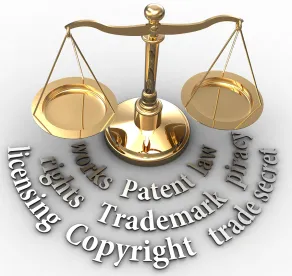Addressing whether it has jurisdiction to review joinder decisions made by the Patent Trial and Appeal Board (PTAB), the US Court of Appeals for the Federal Circuit reissued a prior decision explaining that a joinder decision is reviewable because the decision occurs after the inter partes review (IPR) proceeding institutes. Facebook, Inc. v. Windy City Innovations, LLC, Case Nos. 18-1400, -1401, -1402, -1403, -1537, -1540, -1541 (Fed. Cir. Opinion Issued: Mar. 18, 2020, Opinion Reissued: Sept. 4, 2020) (Prost, C.J.) (Prost, C.J., concurring with additional views).
Windy City Innovations filed a complaint accusing Facebook of infringing four patents that collectively have 830 claims. Facebook filed a motion requesting that Windy City be forced to limit the number of asserted claims to 40 by the time of Facebook’s one-year IPR filing deadline, but the district court denied the motion. One year after it was served with the complaint, Facebook filed petitions for IPR on a subset of the 830 claims.
Five months after Facebook filed its petitions, Windy City narrowed its case to a subset of claims, including claims that were not subject to Facebook’s IPR petitions. After the PTAB instituted review based on Facebook’s petitions, Facebook immediately filed two new IPR petitions. Because the one-year time bar had passed, Facebook also filed a motion under § 315(c) to join the new IPR petitions to its now-instituted proceedings. The PTAB granted Facebook’s motion for joinder and ultimately issued a final written decision with a mixed result, cancelling some claims and finding others not unpatentable. Both parties appealed
The Federal Circuit found that the PTAB erred in allowing Facebook to use § 315(c) to join itself to its earlier-filed petitions. The Court explained that the statutory language was unambiguous, finding that the ordinary usage of “joining a person as a party to a proceeding” means that the joined party must necessarily be someone who is not already a party. The Court further explained that allowing same-party joinder would impermissibly allow the Director to join new issues to an existing proceeding. The Court found that § 315(c) only authorizes the Director to join (1) a person (2) as a party (3) to an already instituted IPR. The language does not authorize the joined party to bring new issues into the already instituted IPR proceeding. The Court found this understanding consistent with other subsections of § 315, where there is a clear distinction between § 315(c), which refers to the joinder of a person as a party, and § 315(d), which refers to the consolidation of multiple proceedings and the issues in each. The Court was sympathetic to Facebook’s policy concerns regarding patents with a large number of claims that may not be narrowed to a manageable number of asserted claims before the one-year time-bar. Nevertheless, it found that policy considerations could not overcome the unambiguous language of the statute. The Court therefore vacated the PTAB’s final written decisions as to the later-filed petitions.
After the Court issued its original opinion, Facebook filed a petition for panel rehearing, arguing that the Federal Circuit did not have jurisdiction to hear joinder appeals because of § 314(d)’s requirement that “[t]he determination by the Director to institute an inter partes review under this section shall be final and nonappealable.” Because a request for joinder must be accompanied by a petition, a joinder decision is akin to a decision whether to institute the follow-on IPR. Facebook argued that the Court’s decision in Cuozzo v. Lee (IP Update, Vol. 19, No. 7) controlled because it prohibits appeals of the PTAB’s ultimate conclusion as to institution of a petition.
The Federal Circuit disagreed, finding that the PTAB’s joinder decisions were reviewable because a joinder decision occurs only in an already-instituted IPR proceeding. The Court explained that joinder requires two steps: (1) determining that the petition warrants institution, and thereafter (2) determining whether to join the joinder applicant as a party to an existing IPR proceeding. While the first step is a non-appealable decision on the merits as to whether the petition meets the PTAB’s requirements for institution, the second step is appealable because it relates to how the PTAB proceeds after institution. The second step of the joinder inquiry is more akin to the appealable issue in SAS Institute (IP Update, Vol. 21, No. 5), finding that once the PTAB determines institution is warranted, parties may appeal the manner in which the PTAB proceeds after institution. In SAS Institute, the issue was whether the PTAB could institute review on only a subset of challenged claims, whereas here the issue was whether the PTAB exceeded its authority to join the joinder applicant as a party after institution. The Court therefore found it had jurisdiction to consider joinder decision issued by the PTAB.



 />i
/>i
